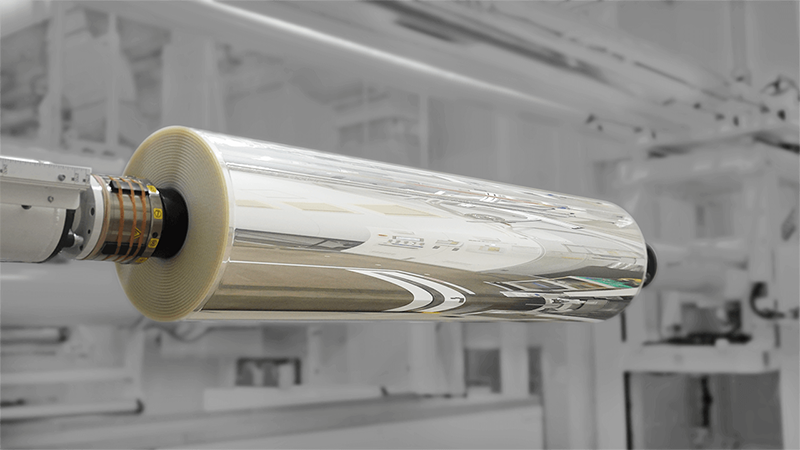Solvent casting technology for optical films
Meeting the needs for sophisticated display applications by offering high functionality and quality

Polymeric optical film-casting methods and transform from TAC to SANUQI
In recent years in the display industry, the market has expanded, customer needs have changed, and displays have been deployed for a variety of uses in line with the growth of information services and technological innovation enabled by digitalization. More specifically, goals for films have shifted to sophisticated functionality such as antireflection properties, UV-cutting ability, and high durability of displays. In addition, application categories have increased, including foldable smartphones and ultrathin films used on smartphones. Konica Minolta has commercialized a new-generation COP (named SANUQI) as a new alternative material to TAC. The Company’s material design technology combined with a solution casting technique leveraging DX technology has enabled the product to offer both superb water resistance and ease of processing.
Technology Overview
Polymeric optical film-casting methods are divided into the melt casting method and the solution casting method. Konica Minolta chooses the latter because it is easy to control post-casting drying time and is effective for thin-film casting. The new-generation COP (SANUQI) is processed by taking advantage of the features of the solution casting method. Moreover, DX technology was introduced to build a new platform comprising a dedicated information network for conducting analysis and monitoring based on data obtained from cameras and sensors. The use of a highly heat-resistant, high-molecular-weight polymer, made possible by these measures, has resulted in excellent crack resistance. The resulting suitability for precision drawing and toughness make the film ideal for various irregular shaped processing, such as in-vehicle component applications. Additionally, the film is expected to be used on innovative displays such as foldable, rollable, and flexible organic light-emitting diode (OLED) displays.




